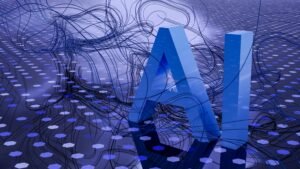Have you ever checked or even asked whether a computer might learn just as well as a human? Perhaps the solution lies with Intelligent Tutoring Systems (ITS)! Because they provide individualized coaching without the need for a teacher, these AI-powered educational tools are transforming the way we learn. Envision an instructor who is specifically designed for you, understanding all the necessary elements for your success. We will explore the essence of ITS and its use of artificial intelligence to transform education in this piece. Are you prepared to get excited about how education will develop in the future? Perfect! So, what is an intelligent tutoring system?
Understanding Intelligent Tutoring Systems
First, what is an intelligent tutoring system?
An Intelligent Tutoring System (ITS) is like having a super-smart teacher inside your computer. It delivers personalized lessons and feedback without a human teacher. The magic here is artificial intelligence (AI), which helps the system understand each learner’s needs.
If you’re struggling with math, the ITS slows down and explains things more clearly. If you’re breezing through history, it speeds up and keeps you challenged. It’s like having a tutor who knows you well and adapts to your learning style.
Let’s explore the key components of ITS:
- Domain Model: The brain of the ITS, containing all the knowledge about the subject area.
- Student Model: A digital profile that tracks what you know and what you still need help with.
- Tutoring Model: Decides how to present information and ask questions.
- User Interface: The part you interact with, like the graphics and text on your screen.
- Feedback Mechanism: Provides instant reactions to your answers, helping you learn as you go.
AI is the secret sauce that makes it flexible and smart. It analyzes your performance in real-time and adapts lessons to suit your learning style. This means you get a custom-tailored experience every time you log in, making learning efficient and fun!
Key Features and Benefits of Intelligent Tutoring Systems

Intelligent Tutoring Systems (ITS) adapt to your needs through adaptive learning technology, adjusting their teaching style based on your performance. If you struggle with a subject, ITS slows down and explains concepts differently, while it increases the challenge if you’re mastering a topic quickly. This customization allows for self-paced learning, providing immediate feedback as you progress.
It’s like having a personal tutor available 24/7, ready to offer guidance or encouragement after each answer. With ITS, you can take your time to grasp concepts and receive instant feedback, ensuring you know your strengths and what to focus on next.
Here are some top benefits of ITS:
- Scalability: Can cater to many students simultaneously without losing quality.
- Increased Engagement: Keeps learners interested with interactive content.
- Personalized Learning Experiences: Tailors lessons to fit individual learning styles.
- Immediate Feedback: Provides corrections and tips right away.
- Self-Paced Learning: Allows students to learn at their own speed.
- Resource Efficiency: Reduces the need for physical materials and human resources.
ITS is transforming education. By integrating AI, it’s making education more accessible and customizable. Gone are the days of one-size-fits-all classrooms. With ITS, learning becomes a personal adventure, making the whole process more effective and enjoyable!
Examples and Applications of Intelligent Tutoring Systems
What is an intelligent tutoring system, and have you wondered where Intelligent Tutoring Systems (ITS) are making an impact? These AI-powered learning assistants serve as personal tutors across various subjects, from language to math.
In language learning, ITS provides instant feedback on speaking and grammar. Math tutoring systems adjust problem difficulty based on your progress, ensuring the right level of challenge. Science platforms simulate experiments and break down complex theories into digestible parts, acting like tireless lab partners.
Notable examples include Carnegie Learning’s Maia, which offers personalized math lessons, and Duolingo, a language-learning app that gamifies vocabulary acquisition.
These tools are transforming education by delivering a personalized and engaging learning experience that adapts to individual needs. With AI at their core, ITS functions as a pocket-sized tutor available anytime, anywhere!
The Evolution and Future of Intelligent Tutoring Systems

Did you know Intelligent Tutoring Systems (ITS) date back to the 1960s and 1970s? Initially part of intelligent computer-assisted learning, early ITS focused on content delivery and answer checks.
Today, ITS has evolved into sophisticated tools that personalize lessons using machine learning, natural language processing, and data analytics. Machine learning helps ITS improve with each interaction, while natural language processing enables natural text and speech communication.
Data analytics allows real-time adjustments based on performance. The future of ITS is promising, with potential for personalized education that anticipates learning needs. Advancements in virtual and augmented reality could create engaging experiences, while ITS could also provide valuable insights to teachers about student progress. The potential for ITS to offer tailored education for diverse learning styles is immense, making learning enjoyable and effective.
Challenges and Considerations in Implementing Intelligent Tutoring Systems
What is an intelligent tutoring system, and what happens at the core. Behind the scenes of an Intelligent Tutoring System (ITS), a lot of technology is at play, particularly in modeling student knowledge and behavior. Building a system that understands individual learning styles is complex, requiring extensive data collection and analysis. Educational data analytics helps ITS identify patterns and customize learning experiences, but it demands sophisticated algorithms and quality data.
Key considerations for deploying ITS include:
- Privacy Concerns: Safeguarding student data is crucial for trust.
- Equitable Access: ensuring all students can access ITS regardless of resources.
- Data Quality: High-quality data is essential for accurate modeling and feedback.
- System Interoperability: ITS should integrate seamlessly with existing educational tools.
- Teacher Support: Training and resources are needed for effective ITS integration.
To address these challenges, we can establish clear policies to protect privacy, form partnerships to enhance access, maintain data quality, ensure interoperability, and support teachers with adequate training. With these strategies, ITS can become a powerful ally in education!
Conclusion
So, what is an intelligent tutoring system? and what does it offer. It offers a fascinating look into AI-powered education.
We took a walk through how ITS adapts to each student’s needs, supports learning at your pace, and provides valuable feedback. With examples like Duolingo spicing up language learning, ITS shows its worth in classrooms and beyond.
Looking ahead, ITS continues to change education with cool tech and new trends. While challenges exist, the potential for personalized learning is exciting.
Embracing these tools could mean more engaging lessons and successful learning journeys.
FAQ
What is an intelligent tutoring system, and some examples?
An intelligent tutoring system could be Maia for math from Carnegie Learning or Duolingo for languages. They adapt to your learning pace and give instant feedback, making learning both effective and engaging.
What is an intelligent tutoring system in AI?
An intelligent tutoring system is a computer-based tool using AI to tailor learning. It offers content and feedback based on individual needs, reducing the need for human instructors.
How do intelligent tutoring systems work in education?
These systems use AI to personalize learning, adjusting to each student’s pace and needs. They provide scalable solutions and immediate feedback, enhancing the educational experience across various subjects.
How effective are intelligent tutoring systems?
They’re super effective because they offer personalized content and instant feedback. This adaptability can boost engagement, improve learning outcomes, and support individual pacing.
What is the meaning of a tutoring system?
A tutoring system is a digital educational tool designed to teach and provide feedback without a human tutor. It’s like having a personal tutor that’s always ready to help you learn.




